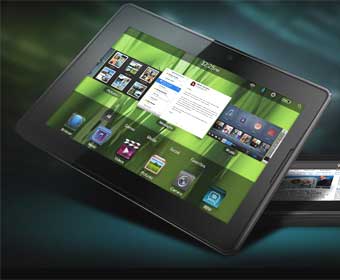Research In Motion (RIM) has unveiled its new BlackBerry BBX mobile platform; a hybrid of the BlackBerry platform and the QNX operating system that the firm uses in its tablet offering, the PlayBook. The BBX platform has been designed from the ground up, said RIM, and the BBX operating system will support BlackBerry cloud services and development environments for both HTML5 and native developers.
October 19, 2011

Research In Motion (RIM) has unveiled its new BlackBerry BBX mobile platform; a hybrid of the BlackBerry platform and the QNX operating system that the firm uses in its tablet offering, the PlayBook.
The BBX platform has been designed from the ground up, said RIM, and the BBX operating system will support BlackBerry cloud services and development environments for both HTML5 and native developers.
It will also support applications developed using any of the tools available today for the BlackBerry PlayBook, such as the Native Software Developer Kit, Adobe AIR and Flash and WebWorks/HTML5. It will also run BlackBerry Runtime for Android Apps, meaning BlackBerry users will be able to use Android apps on their handsets.
At its BlackBerry Developer Conference, RIM also said that BBX will also include the new BlackBerry Cascades UI Framework for advanced graphics, and bring “Super App” capabilities to enable many advanced capabilities including deep integration between apps, always-on Push services and the BBM Social Platform.
According to RIM, the BBX platform will be used for smartphones as well as tablets, although at the DevCon event at San Francisco, the company also unveiled the Developer Beta version of the BlackBerry PlayBook OS 2.0.
The Developer Beta includes the BlackBerry Runtime for Android Apps and the BlackBerry Plug-In for Android Development Tools (ADT), allowing developers to bring Android applications to BlackBerry PlayBook tablets.
“With BBX, RIM is rebuilding the foundation for all its devices, including the iconic handhelds, and BBX begins to show some real promise in that sphere, with potential for a much more powerful, immersive and media friendly platform,” said Ovum chief analyst Jan Dawson.
“However, the adoption of QNX across the entire line in the coming months and years also means that RIM is leaving its traditional BlackBerry developers high and dry. In fact, it’s arguably providing better support for existing Android developers than it is for existing BlackBerry Java developers, as it seeks to drive up the number of apps on the platform rapidly. There simply is no migration path for existing developers, short of starting from scratch with an entirely new development environment.
RIM also announced the availability of the Native SDK for the BlackBerry PlayBook in San Francisco. The Native SDK allows developers to build high-performance, multi-threaded, native C and C++ applications and enables developers to create advanced 2D and 3D games and other apps with access to OpenGL ES 2.0 and Open AL, as well as device specific APIs.
Applications developed with the Native SDK will run on the BlackBerry PlayBook and will be forwardly compatible on BBX-based tablets and smartphones, RIM said.
Dawson commented: “ The range of options for development, including those already announced, will be appealing to developers, but they only respond to part of the challenge for developers. The main challenge remains giving developers an audience and a market for their applications, which doesn’t exist today in the case of BBX. As long as it remains a tablet-only operating system, developer appeal will be limited, and with BBX-based handhelds some time off still, many developers won’t feel a pressing need to develop for BBX in the near term.
“In the meantime, the platform risks suffering from the same chicken and egg problem as many others – users won’t buy a device without any apps, and developers won’t develop for a platform without any users.”
About the Author(s)
You May Also Like








.png?width=300&auto=webp&quality=80&disable=upscale)


_1.jpg?width=300&auto=webp&quality=80&disable=upscale)


.png?width=800&auto=webp&quality=80&disable=upscale)